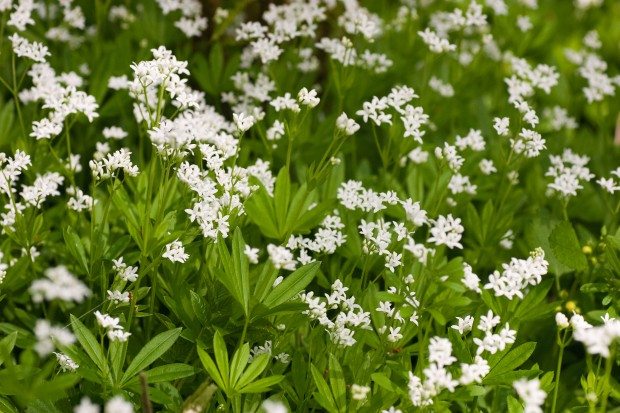How to make Sweet woodruff cordial
It’s been a while since I’ve written about foraging. At this time of year we have quite a few options including collecting pignuts which can be eaten raw, wild garlic (also known as ransoms) which can be made into pesto or soups and even oak leaves which can be used to make wine!

One plant I am particularly interested in at the moment is sweet woodruff. This unassuming little green plant is a member of the bedstraw family and it can generally be found in beech or oak woodland. The cordial is very popular in Germany where it is known as Waldmeistersirup or Maikrautsirup. It is often used in many recipes for spring and May Day celebrations. It can be used to make cordial, icecream and even a sweet woodruff flavoured wine.
Today I’m going to give you a recipe for sweet woodruff cordial. You will need 1kg of caster sugar, 2 litres of filtered water, 3 lemons, 3tsp citric acid and 120g fresh sweet woodruff. This will make around 2.5 litres of cordial. Wash the sweet woodruff in a colander and spread it to dry on a tea towel, overnight. Remove the leaves from the stem and set aside. Add the water, sugar and citric acid to a bowl and bring to the boil until the sugar has dissolved. Put this in a bucket with the sliced lemons and sweet woodruff leaves. Give it a good stir and leave for 2 days. Strain and then bring back to the boil before bottling in sterilised containers.
One thing to note is that sweet woodruff contains coumarin which can be toxic in large quantities and can cause headaches. The cordial should be consumed in small doses. Before you get too put off though, coumarin is found in many food plants including strawberries, apricots and dates.
Laura Preston, Falls of Clyde Ranger
Help support our vital work and join us today!
Help protect Scotland’s wildlife
Our work to save Scotland’s wildlife is made possible thanks to the generosity of our members and supporters.
Join today from just £4 a month to help protect the species you love.
Preface
It’s been a while since I’ve written about foraging. At this time of year we have quite a few options including collecting pignuts which can be eaten raw, wild garlic …
